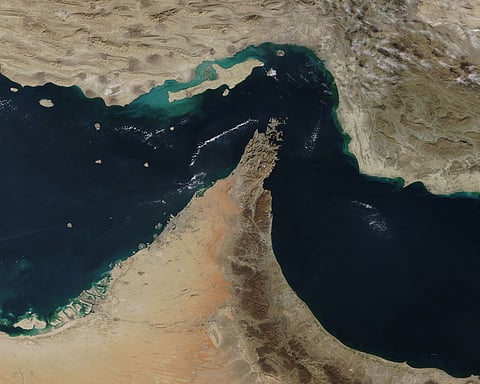

Iranian forces seized an oil tanker in the Strait of Hormuz on Friday, marking the first such interdiction since the brief but intense 12-day conflict between Iran and Israel in June. The operation targeted the Marshall Islands-flagged tanker Talara, which was carrying high-sulfur gasoil when it was intercepted shortly after exiting the strait and entering the Gulf of Oman.
According to preliminary reports, the Islamic Revolutionary Guard Corps (IRGC) Navy carried out the seizure using small rapid-assault boats roughly 20 to 22 nautical miles east of Khor Fakkan in the United Arab Emirates. After surrounding the ship, Iranian personnel boarded the vessel and directed it toward Iranian territorial waters. As of Friday evening, Tehran had issued no official explanation for why the tanker was taken.
The Talara is managed by Cyprus-based Columbia Shipmanagement. The vessel departed from Ajman in the UAE and was bound for Singapore before communications were lost. Columbia confirmed that it had been unable to reestablish contact following the IRGC boarding. The seizure adds to a growing list of maritime confrontations in the region. Since 2022, Iran has seized six commercial tankers, including the MSC Aries, which was taken in April of last year in what Tehran described as retaliation for an Israeli strike on an Iranian consulate in Damascus.
The Strait of Hormuz remains one of the most strategically vital waterways on Earth. More than a quarter of the world’s oil, natural gas, and petroleum products pass through the narrow corridor daily. Any significant disruption would trigger immediate global economic consequences. This vulnerability has been highlighted repeatedly throughout Iran’s escalating tensions with both Israel and the United States.
After the U.S. carried out airstrikes in June against three Iranian nuclear facilities, Tehran sought and received parliamentary authorization to close the strait if deemed necessary for national defense. Iran subsequently deployed naval assets to the region, creating global concern that a full closure or partial shutdown was imminent. The risk of a supply shock reportedly played a key role in President Donald Trump’s decision-making during the June escalation. On June 23, just before a ceasefire was reached, Trump publicly urged the U.S. energy sector to increase production, warning of potential disruptions stemming from Iranian naval maneuvers.